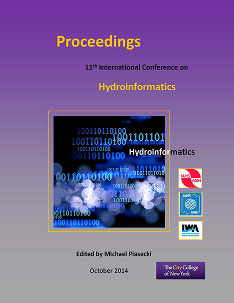Document Type
Presentation
Publication Date
8-1-2014
Abstract
Climate change has resulted in substantial variations in annual extreme rainfall quantiles in different durations and return periods. Predicting the future changes in extreme rainfall quantiles is essential for various water resources design, assessment, and decision making purposes. Current Predictions of future rainfall extremes, however, exhibit large uncertainties. According to extreme value theory, rainfall extremes are rather random variables, with changing distributions around different return periods; therefore there are uncertainties even under current climate conditions. Regarding future condition, our large-scale knowledge is obtained using global climate models, forced with certain emission scenarios. There are widely known deficiencies with climate models, particularly with respect to precipitation projections. There is also recognition of the limitations of emission scenarios in representing the future global change. Apart from these large-scale uncertainties, the downscaling methods also add uncertainty into estimates of future extreme rainfall when they convert the larger-scale projections into local scale. The aim of this research is to address these uncertainties in future projections of extreme rainfall of different durations and return periods. We plugged 3 emission scenarios with 2 global climate models and used LARS-WG, a well-known weather generator, to stochastically downscale daily climate models’ projections for the city of Saskatoon, Canada, by 2100. The downscaled projections were further disaggregated into hourly resolution using our new stochastic and non-parametric rainfall disaggregator. The extreme rainfall quantiles can be consequently identified for different durations (1-hour, 2-hour, 4-hour, 6-hour, 12-hour, 18-hour and 24-hour) and return periods (2-year, 10-year, 25-year, 50-year, 100-year) using Generalized Extreme Value (GEV) distribution. By providing multiple realizations of future rainfall, we attempt to measure the extent of total predictive uncertainty, which is contributed by climate models, emission scenarios, and downscaling/disaggregation procedures. The results show different proportions of these contributors in different durations and return periods.



Comments
Session R67, Hydro-Climatological Data and Uncertainty